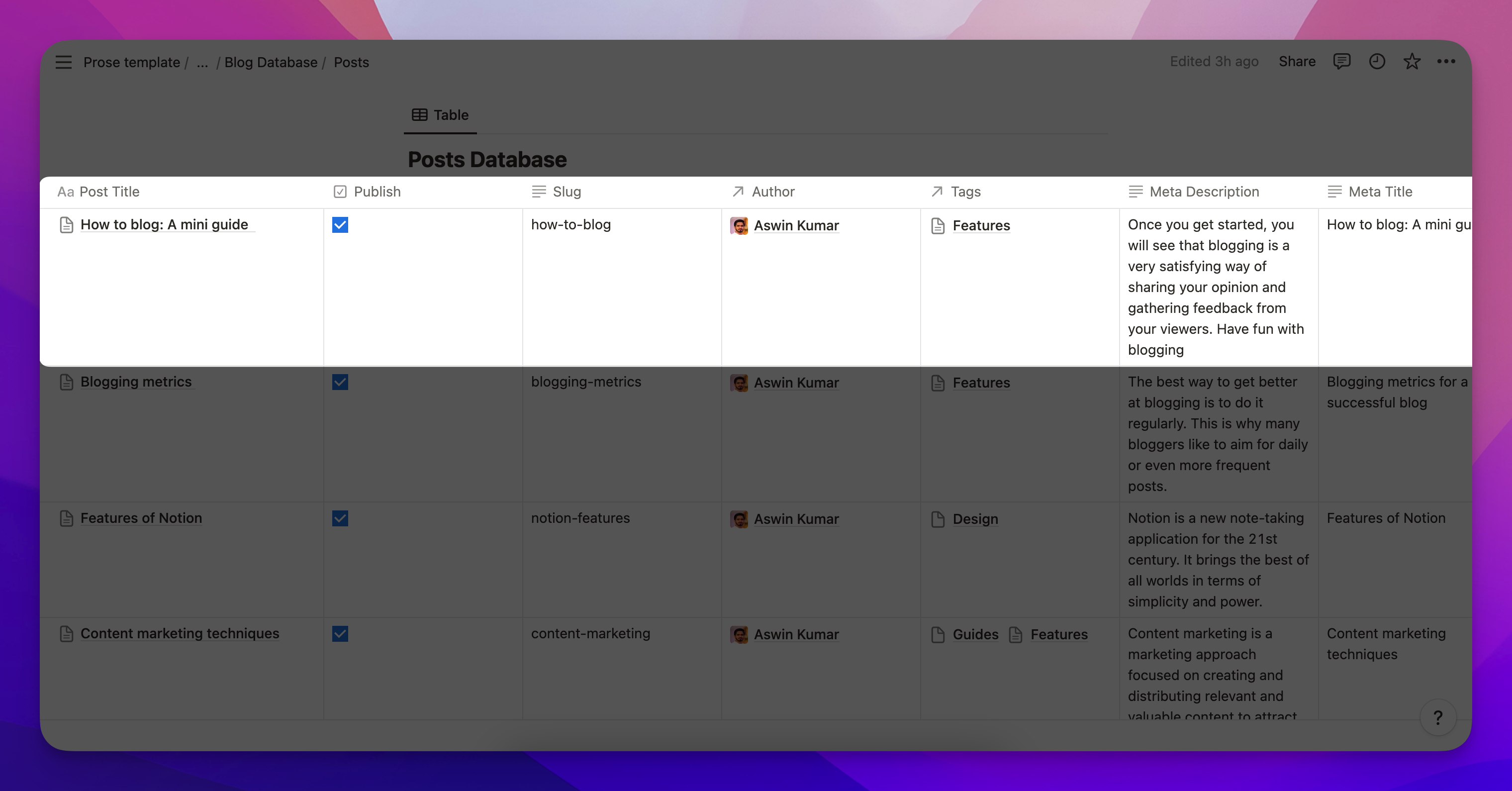Managing your blog post details in Notion.
- Here, each row represents a single article and is represented as a page in your posts notion database.
- To write a new article all you need to do is create a new row and fill up all the associated properties.

The posts database has multiple columns where you manage different properties of your blog posts listed below.
1. Page Title: Used as a title of the blog post.
2. Cover image/Thumbnail: You can add a cover image of your choice to your notion page. This will be displayed as the thumbnail of your blogs on your blog page. You’ll have a default thumbnail if you don’t add any image here.
3. Slug: This is the last part of your URL. Set this to be unique and related to the content of the page.Your page title will automatically become your slug if you leave this slot empty.
4. Publish: You have to check this before hitting “Publish” in Bullet dashboard.
5. Description: This description is to summarize your blog. This will be displayed below your blog thumbnail in your blog page to let the users know what the blog is about.
6. Meta Title: This is the text that is displayed on search engine result pages and browser tabs to indicate the topic of a webpage.
7. Date: This Date field represents when the article is published. If this date is in the future, Bullet understands that this post is scheduled for a later date and won't publish the post. All the posts in the list pages are sorted by date field in descending order.
8. Meta Description: This is to interest users with a short, relevant summary of what a particular page is about. They are like a pitch to convince the user that the page is exactly what they're looking for. Your meta description will be taken from your description if you don’t enter anything in this slot.
9. Meta Keywords: Meta keywords are meta tags that you can use to give search engines more information about a page's content.
10. Author: Choose an author from your list of authors or create a new author from the main database
11. Tag: Choose relevant tags from your list or create new tags from your main database
12. Related Posts: It is a self-referencing relation field to the Posts table. You can select up to 3 posts that will be populated under related posts for the current posts. If you leave this empty, Bullet will automatically pick related posts based on tags and authors.
Make sure to fill all this before publishing your blog post. This helps boost up your site SEO!


